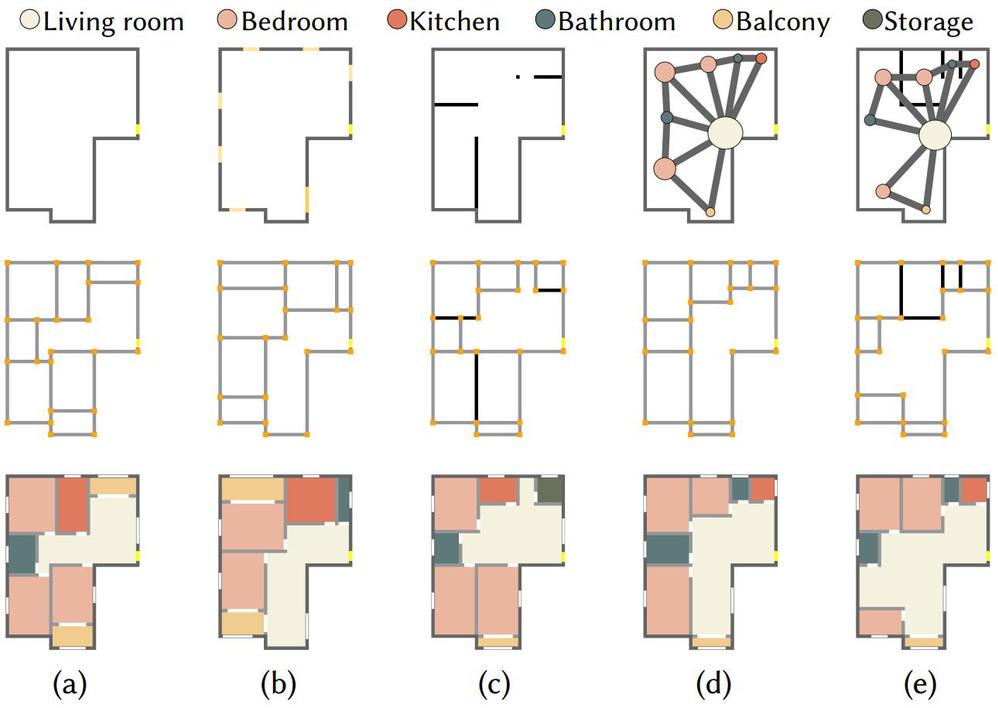The joint research team from the School of Computer Science and Information Engineering and the School of Software has made remarkable progress in computer aided design recently. The research outcomes have been accepted by SIGGRAPH 2022, a well-known international conference on computer graphics, and the paper is published in ACM Transactions on Graphics (TOG). It is the first time that Hefei University of Technology, as the first author affiliation, has published a paper in such an important academic journal.
With the rapid development of computer technology, the indoor scene, an important research object in computer graphics and computer vision, is widely applied in the fields of animation film, computer games, and virtual reality. However, the indoor floorplan, the basis for interior design and scene modeling, is traditionally made by designers manually or generated by the software. The process is time-consuming. To use the learning ability of artificial intelligence and enable it to automatically generate floorplans is of great significance for architectural studies, computer graphics, and other fields.
Recently, the development of floorplan generation based on deep learning has made significant progress. However, to obtain the desired results, complicated post-processing is still necessary. To achieve automatic floorplan generation, the research team devises a novel representation of wall graphs for floorplan modeling. With the public dataset RPLAN (containing more than 80,000 real architectural interior floorplans), the wall graph can be directly synthesized, and subsequently, the generation of an interior floorplan can be realized based on the deep learning method. To this end, the research team further designs a geometry network and a semantics network respectively, and integrates the two networks into a coupled network, in which the two networks are interlaced to generate the whole wall graph in an autoregressive manner.
Compared with previous methods, this work achieves end-to-end automatic generation for the first time and supports more constraints, including learning-based load-bearing wall constraints, achieving leading performance in this field. This work had been invited for the presentation at SIGGRAPH 2022 held in Canada from August 8 to 11 this year.

Overview of the proposed generation algorithm

The automatic floorplan generation algorithm supports various constraint designs such as boundaries(with or without windows), load-bearing walls, and bubble diagrams.
The first author of the paper is Sun Jiahui, a postgraduate at the School of Computer Science and Information Engineering, and the corresponding authors are Prof. Zheng Liping from the School of Computer Science and Information Engineering and Dr. Wu Wenming from the School of Software. Hefei University of Technology is the first author affiliation. In addition, Professor Liu Ligang from the School of Mathematical Sciences, University of Science and Technology of China, is a partner in this work.
This project has been supported by the National Natural Science Foundation of China and the Fundamental Research Funds for the Central Universities.
Details of the paper:
Jiahui Sun, Wenming Wu, Ligang Liu, Wenjie Min, Gaofeng Zhang, and Liping Zheng. WallPlan: synthesizing floorplans by learning to generate wall graphs[J]. ACM Transactions on Graphics (TOG), 2022, 41(4): 1-14. DOI:https://dl.acm.org/doi/10.1145/3528223.3530135。




